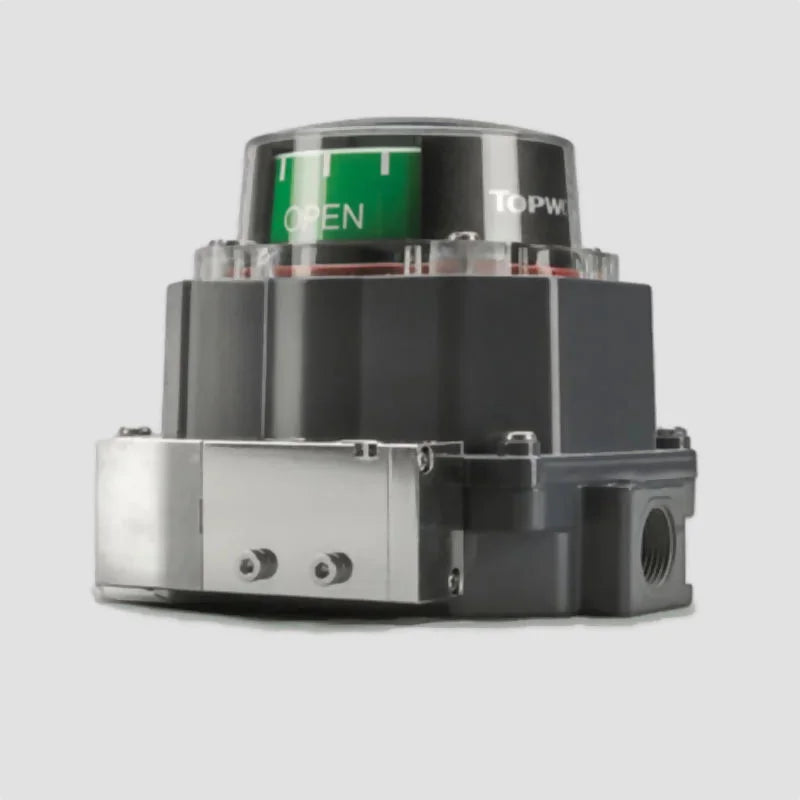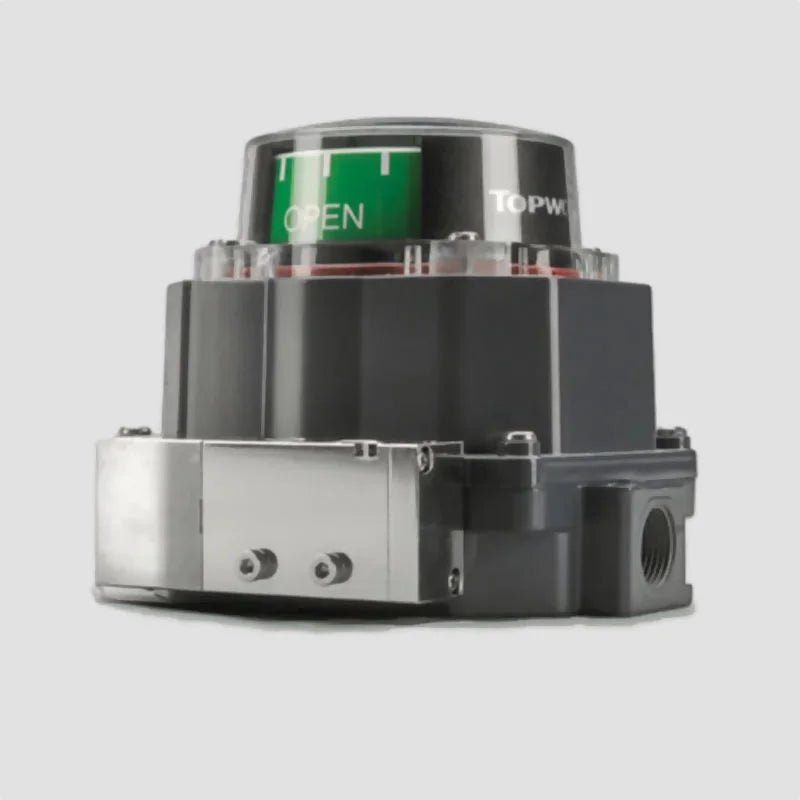Topworx Switchboxes
TopWorx Limit Switch Box TVL-R2WGNPM Valve Monitor
TopWorx Limit Switch Box TVL-R2WGNPM Valve Monitor
Couldn't load pickup availability
Upgrade your valve automation with the TopWorx TVL-R2WGNPM Limit Switch Box, engineered to deliver accurate valve position monitoring in the most demanding environments. Designed by TopWorx, a global leader in valve monitoring and control solutions, this compact yet powerful valve monitor offers unmatched reliability, visual indication, and performance for on/off valves across a wide range of industries.
The TVL-R2WGNPM is part of the TopWorx TVL Series, offering mechanical switch feedback, universal NAMUR mounting, and robust weatherproof protection (IP67). Its corrosion-resistant housing and versatile internal components make it ideal for use in chemical plants, food processing, water treatment, and general process industries. Designed to operate in harsh outdoor or indoor conditions, it ensures accurate signalling and reduces downtime in your valve network.
🔑 Key Features:
Mechanical Switches: Two SPDT mechanical switches provide dependable open/closed position feedback
Visual Position Indicator: Clear dome indicator allows at-a-glance confirmation of valve status
Universal Mounting: NAMUR standard mounting makes installation easy across different actuator types
IP67 Enclosure: Fully sealed enclosure protects against dust and water ingress
Rugged Construction: Engineered to withstand tough industrial conditions
Conduit Entry: Dual conduit entries for flexible wiring options
Factory Pre-Wired: Reduces installation time and potential wiring errors
Wide Compatibility: Designed to integrate seamlessly with pneumatic actuators
📊 Product Specifications
| Specification | Details |
|---|---|
| Model | TVL-R2WGNPM |
| Manufacturer | TopWorx |
| Series | TVL Series |
| Switch Type | 2 × SPDT Mechanical Switches |
| Enclosure Rating | IP67 |
| Visual Indicator | Dome Position Indicator (Open/Closed) |
| Mounting Standard | NAMUR |
| Conduit Entries | (2) 1/2” NPT |
| Operating Temperature | -40°C to +85°C |
| Material | Glass-filled polyester body (corrosion-resistant) |
| Certifications | CE, CSA, ATEX (on some configurations) |
| Applications | Pneumatic Actuators, Process Valves, On/Off Valves |
Built for dependability, the TopWorx TVL-R2WGNPM ensures precise position feedback, boosts system reliability, and reduces maintenance effort—making it a smart addition to any valve automation system. Whether you're working in food and beverage, pharmaceuticals, water treatment, or petrochemical processing, this switchbox is designed to deliver long-lasting value and control.
Need help choosing the right TopWorx limit switch for your application? Get in touch with our team today!
Share

FAQ's
What is the difference between a valve and an actuator?
What types of actuators are available?
The main types of actuators are:
Pneumatic actuators – use compressed air for fast, reliable operation.
Electric actuators – use electrical power for precise control.
Hydraulic actuators – use fluid pressure for high-torque applications.
Each type offers unique advantages depending on the environment, media, and system control needs.
How do I choose the right actuator for my valve?
To select the correct actuator, consider:
Valve type and torque requirement
Power source available (air, electric, or hydraulic)
Operating environment (temperature, humidity, hazardous area)
Control signal type (on/off or modulating)
Matching actuator torque and compatibility with the valve’s ISO mounting ensures reliable performance.
What are the main types of valves used in automation?
The most common valves in automated systems include:
Ball valves – for tight shutoff and quick operation.
Butterfly valves – for larger flow control with compact design.
Globe valves – for precise throttling and flow regulation.
Check valves – to prevent backflow.
Gate valves – for full bore flow isolation.
What’s the difference between a double-acting and spring-return actuator?
Double-acting actuators use air (or power) to both open and close the valve.
Spring-return actuators use air to open (or close) the valve, and a built-in spring to automatically return it to a safe position when power or air is lost — ideal for fail-safe operation.
How often should valves and actuators be serviced?
Regular maintenance intervals depend on operating conditions, but a good rule of thumb is to inspect every 6–12 months.
This includes checking for leaks, lubrication, seal wear, and actuator responsiveness to prevent unexpected downtime.

